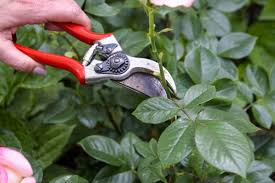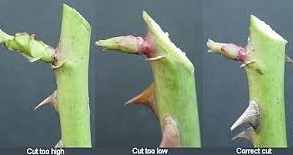Pruning Your Roses Ready for Spring
Roses are hands-down the most loved flowers of all time. Their blooms are exquisite and their scent exudes pure romance. Perhaps what makes them even more special is that they have a reputati
 on for being “fussy,” delicate and difficult to grow. The more effort you put into making them as healthy and beautiful as they can be, the more special they become.
on for being “fussy,” delicate and difficult to grow. The more effort you put into making them as healthy and beautiful as they can be, the more special they become.
But the level of difficulty depends on the variety; some varieties need more careful maintenance, while others will thrive even under the most relaxed method of care.
To keep your rose garden looking young and fresh, you may want to prune them on schedule. The months of June to August are the best months for pruning because these are the times when roses are in their dormant state. In Australia, many rose growing experts say that pruning your roses ready for spring is best done during July.
However, this isn’t an iron-clad rule. Your pruning schedule will still depend on the type of rose plant you have as well as the level of cold you have in your location during winter. Some exceptions include:
- Old-fashioned, banksias, weeping standards: Prune only after the main flowering
- Once-flowering varieties: As soon as they have finished flowering, usually late spring to early summer
- Climbing roses: Prune after blooming
- Roses grown in colder locations: Prune when it’s not too cold to protect new growth from frost damage
It should be noted that roses can still continue to grow even without pruning; after all, shrubs grow in the wild. But proper pruning practices can deliver the following advantages:
- It stimulates new growth, paving the way for a healthier, stronger, more lush and flowery garden.
- It allows good air circulation around each plant and facilitates the proper application of fungicide to help prevent fungus growth or blackspot, one of the most common and damaging rose garden diseases you can ever experience in your garden.
- It helps the plants to grow in a neater and more visually appealing form.
 Effective pruning requires a good understanding of the growth process and preferences of the specific rose plants you are growing, as well as how the climate and soil conditions in your area impact their health. You’ll also need to be equipped with the right tools, including leather gloves to protect yourself from thorns, a pair of sharp and clean pruning shears, and a narrow saw.
Effective pruning requires a good understanding of the growth process and preferences of the specific rose plants you are growing, as well as how the climate and soil conditions in your area impact their health. You’ll also need to be equipped with the right tools, including leather gloves to protect yourself from thorns, a pair of sharp and clean pruning shears, and a narrow saw.
Know-how of what to cut and how to cut (such as the angle and length) is, needless to say, absolutely important. Thick, spindly stems, dead and old branches and crinkly stems are the usual parts to remove. A 45-degree angle of cut, sloping away from the bud, is effective for encouraging good growth and stopping fungal disease. After each pruning, make sure to spray the plant with the right lime sulphur solution.
What you wouldn’t want when it comes to pruning your roses is to simply wing it without a solid knowledge of the process. When in doubt, ask advice from the experts or get a pruning and gardening specialist to help you out. Don’t hesitate to call the professionals at Jim’s Mowing on 0800 454 654 or book online for a free, no obligation quote.


